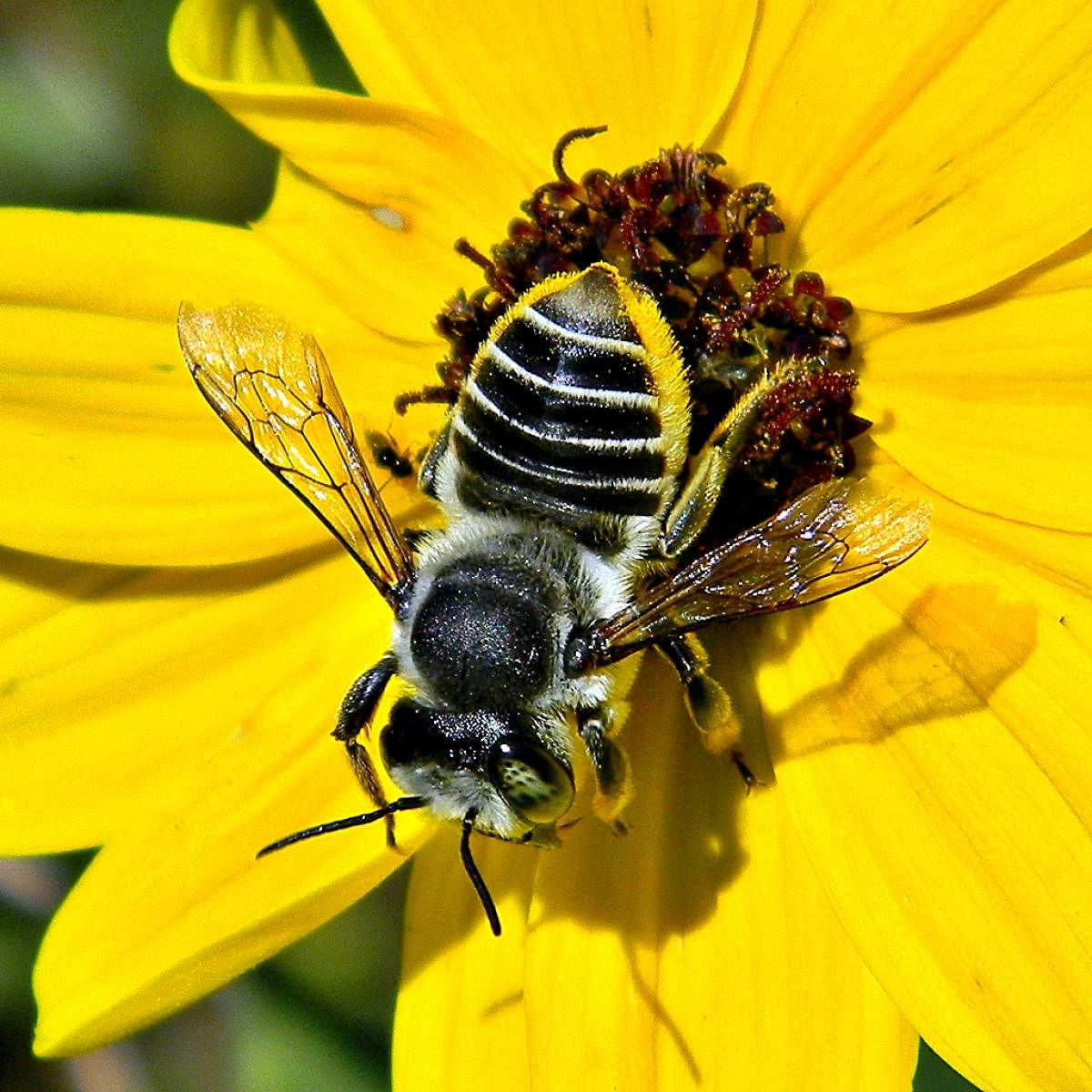

‘Clint Eastwood’s cheroots’ was my first thought when my newly minted teenager found strange-looking tubular things at Navilu Kaadu last winter. There was a pile of them on the lid of a plastic drum on our front porch. The tubes appeared hewn from leaves and resembled cigars, much like the cheroot, the famed accoutrement that Hollywood legend Clint Eastwood dangles from his mouth in his Wild West flicks.
The tubes had tiered cells, with hardened brown lumps sandwiched between cells. The lumps gave off the yellow-brown powder, giving us a clue to the mystery cheroot-maker.
These were brood chambers of nature’s most prolific pollinators — leafcutter bees. The brown lumps were remnants of ‘bee bread,’ a blend of nectar and pollen to nourish the grubs when they hatched. The nests were empty with a few punctures.
I am unsure how the nests came to rest on the drum. I suspect they may have dropped from overhead wall cavities. Leafcutter bees nest in narrow cavities in walls, rotting wood or hollow plant stems. They belong to the family Megachilidae, a group of mostly non-social bees with large mandibles designed for cutting. Mason bees, carden bees and resin bees are the other species in the Megachilid genera, all handily named after their choice of nesting material.
Unlike the social honeybees, leafcutter bees are lone rangers and lead solitary lives. Their pollen-gathering methods differ too. Honeybees ferry pollen in teeny-tiny baskets called ‘corbiculae’ on their rear legs. Leafcutter bees gather copious amounts of pollen on thick branched hair called ‘scopa’ on the ventral side of their abdomen, staining their backsides neon yellow in the process. Much of the gathered pollen dislodge from the scopae when the leafcutter bees move about. Consequently, they must forage a lot more than honeybees to gather sufficient pollen. And the ensuing plentiful pollination makes leafcutter bees champion pollinators among all bee clans.
Male bees are smaller than females, sport longer antennae and have blunt rears. Females have pointy abdomens. The males procreate and perish, while female leafcutter bees go on to build nests and lay eggs. They die before their young hatch.
These bees are docile and rarely sting, even with strong mandibles attached to largish, muscular heads. The female leafcutter bees use their mandibles to bite out crescent-shaped leaf bits for nesting material.
So, the next time you spot leaves with empty, gaping arcs, know that you are in the esteemed company of a super-pollinator!
The bees then curl these leafy discs into half-inch cells within cavities; 10 or 12 stacked cells make up a nest. They provision each cell with bee bread or pollen loaf, for their young to feed on. Scientists think the leafy cell lining prevents the larval food store from drying or desiccating, which reminds me of cups fashioned from jackfruit leaves to steam Kotte Kadubu, a Malnad delicacy from my ajja’s homestead.
The female leafcutter bee is known to control the gender ratio of her eggs, laying male eggs in cells near the nest entrance, and female eggs in the cells at the rear. She lays a single egg on the bee bread in each of the nest cells and seals individual cells with leaf discs. The eggs soon hatch. The legless grubs feed on the food stash, moult a couple of times, and spin silken cocoons to pupate in. Mature leafcutter bees then emerge from the cocoons and chew through the layers of the brood chamber to get to the entrance of the nest. The metamorphosis from grub to mature bee takes between six to eight weeks.
Mature leafcutter bees are known to wait for their siblings in the upper chambers to leave the nest before they chew their way out, ensuring they don’t munch on their brethren while chomping through the layers.
And at the dawn of the Anthropocene epoch as solipsistic humans wage superfluous wars, governments and greedy conglomerates rise and topple overnight, covetous global corporations join the mind-numbing AI race, and maniacal billionaires set their sights on trashing outer space, a new generation of leafcutter bees emerge without fuss, and get busy accomplishing the most important job on the planet — pollination — so that life on Earth endures.
Note: This is the first in a three-part series on Navilu Kaadu’s bee species.
Rooting For Nature is a monthly column on an off-kilter urban family’s trysts with nature on a natural farm.
The author chipped away at a software marketing career before shifting gears to independent consulting and natural farming. She posts as @ramyacoushik on Instagram. Reach her at bluejaydiaries@gmail.com